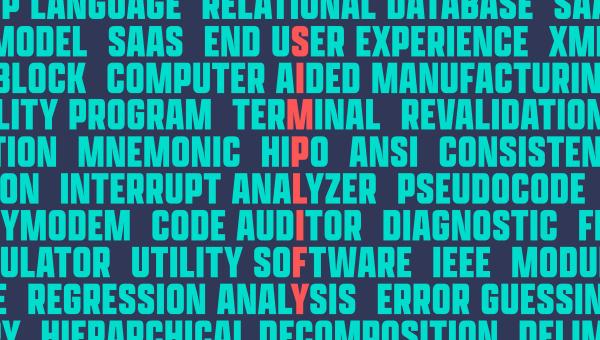digital Credentials Explained: What They Are & Why They Matter in Today’s World
In today’s fast-evolving digital landscape, the ways we learn, certify, and prove our skills have dramatically changed.Digital credentials—from digital badges too verifiable certificates—are quickly replacing customary paper-based qualifications. But what exactly are digital credentials, and why do they matter more than ever before? This complete guide will break down everything you need to know about digital credentials, their benefits, real-world use cases, and actionable insights for both individuals and organizations.
What Are Digital Credentials?
digital credentials are verified, secure, and easily shareable proofs of skills, knowledge, or achievements that are issued and stored electronically. Unlike traditional physical certificates or paper diplomas, digital credentials leverage modern technologies—such as blockchain or secure cloud storage—to ensure authenticity, prevent forgery, and enable easy verification.
Types of Digital Credentials
- Digital Badges: Micro-credentials representing specific skills, accomplishments, or competencies.
- Digital Certificates: Electronic versions of diplomas, degrees, or course completions.
- Blockchain Credentials: records of skills or certifications stored securely and immutably on blockchain networks.
- Open Badges: A standard format for verifiable digital badges,often containing metadata about the achievement,issuer,and criteria met.
These digital credentials are designed to be tamper-proof, machine-readable, and easily shareable on professional networks, resumes, or directly with potential employers.
Why Do Digital Credentials Matter in Today’s World?
The demand for verifiable, flexible, and instantly accessible evidence of skills is skyrocketing. Traditional paper-based certifications no longer meet the needs of a digital-first job market. Here’s why digital credentials matter now more than ever:
- Remote and Global Workforce: Digital credentials transcend borders, making it easier for talent and employers worldwide to connect and verify skills instantly.
- Lifelong Learning and Upskilling: As industries evolve, professionals must continually update their skills. Digital credentials provide quick, stackable recognition for every learning milestone.
- fraud Prevention: Each credential can be instantly validated online, protecting against forgery and misrepresentation.
- Enhanced Visibility: Shareable on platforms like LinkedIn, digital portfolios, or even in email signatures, boosting credibility and discoverability.
- Efficiency and Cost Savings: Issuing, tracking, and verifying credentials digitally saves time and reduces administrative costs for organizations.
How Do Digital Credentials Work?
Digital credentials are typically issued by accredited organizations, educational institutions, or professional bodies.Here’s a simplified overview of the process:
- Assessment: The learner or professional completes a course, assessment, or demonstrates competency.
-
Issuance: The credentialing authority creates a digital certificate or badge, which includes:
- Recipient’s data
- Details of the achievement
- Verification and expiration date (if applicable)
- Secure digital signature
- Storage: the credential is delivered to the recipient’s email or digital wallet and stored in a secure, verifiable format.
- Sharing & Verification: Recipients can share credentials via a unique link, and anyone can verify their authenticity through the issuer’s platform or blockchain record.
Key Benefits of Digital Credentials
- Instant Verification: Employers, clients, and colleagues can instantly confirm your qualifications.
- Portability: Access your credentials from anywhere—no more lost paper copies!
- Motivation and Engagement: Bite-sized micro-credentials encourage continuous learning and provide real-time rewards for achievements.
- Data Richness: Metadata in every digital credential leaves no doubt about what’s been learned or achieved.
- Integration: Easily showcased on professional profiles,social media,websites,and digital CVs.
Real-World Applications for Digital Credentials
For Professional Advancement
Increasingly, employers are recognizing digital credentials as evidence of workforce readiness and ongoing professional growth. By earning digital badges for soft skills, technical expertise, compliance training, and more, employees can demonstrate both depth and breadth of knowledge.
In Higher Education
Universities and colleges use digital certificates to recognize degree completions, course modules, and co-curricular activities—enabling students to swiftly communicate their capabilities to recruiters and grad programs.
Within Corporate Training Programs
Companies leverage digital credentials to track upskilling, reskill employees, and create clear pathways for career advancement. This makes workforce learning more agile and measurable.
For Online Learning platforms
E-learning providers such as Coursera, Udemy, and linkedin Learning issue digital certificates upon course completion, fueling personal branding and skills-based hiring.
How to maximize the Value of Your Digital credentials
- Curate a Digital Portfolio: Maintain an organized, visually appealing portfolio of earned credentials for easy sharing and professional branding.
- Integrate with LinkedIn: Promote your verified credentials directly on your LinkedIn profile to boost your visibility with recruiters and peers.
- Stay Updated: Regularly pursue new learning opportunities to collect up-to-date digital badges in emerging skills and technologies.
- Verify Before You Share: Always ensure your credentials are valid, current, and come from reputable issuers.
- Leverage for career Moves: Use your digital badges and certificates during job applications, interviews, and performance reviews to demonstrate continuous growth.
Challenges and Considerations
- Issuer Credibility: not all digital credentials carry equal weight—choose trusted providers recognized by employers and academic institutions.
- Over-Saturation: The rise of micro-credentials may lead to confusion; focus on quality and relevance, not just quantity.
- Privacy: Ensure your credentials are stored securely and shared only as needed, protecting your digital identity.
Conclusion: The Future of Digital Credentials
As learning and work continue to shift online, digital credentials have become essential currency in the global skills economy. They offer credible,fast,and shareable authentication of your capabilities,making career progression,hiring,and upskilling smarter and more transparent. Whether you are an individual looking to stand out, an employer driving organizational learning, or an educator seeking innovative student recognition, embracing digital credentials can unlock vast new opportunities.
Start by earning, sharing, and leveraging digital credentials today—and set yourself up for success in tomorrow’s digital-first world.

